“Comin’ up,” Deputy Bob Brandt called out to his partner, John McDonnell. He nudged the throttle with his right hand as the August Vollmer, Alameda County’s antiterrorism gunboat, lifted its nose and motored away from its Alameda berth toward the Bay Bridge. It was just after 10 a.m., and the boat skipped over tiny ripples in the green bay waters, which resembled a rumpled sheet of AstroTurf. To the left, San Francisco was still capped in morning fog. To the right, Oakland’s downtown skyline was obscured in a cottony haze. Twin outboards buzzed from the Vollmer‘s stern as it cut through the water.
The day’s primary mission was the same as it has been since the boat first launched in January 2004: To protect the county’s forty linear miles of coastline from terrorists. The Alameda County Sheriff’s Department believes it is the only county agency in the nation that defends its residents with a fully manned gunboat. The Vollmer is only 37 feet long, but is mounted with two belt-fed machine guns that can rattle off eight hundred rounds per minute. Beneath their life jackets, Brandt and McDonnell sport dark-blue fatigues like those worn by SWAT team members. Each deputy carries a hunting knife and a sidearm. Brandt also carries aboard an automatic machine gun, McDonnell a single-barrel shotgun.

Deputies Bob Brandt and John McDonnell with the August Vollmer. 
Deputy Bob Brandt questions some men who said they were fishing for halibut. Credits: Ethan G. Salwen 
McDonnell jumped at the chance to join the crew: “I saw all the money, all the room for promotion, all the action was going toward homeland security.” Credits: Ethan G. Salwen 
See, a terrorist doesnt know any better, Deputy Brandt said of the USS Hornet. He sees a big ship sitting out here and he sees a target. Credits: Ethan G. Salwen 
A few months ago, Brandt says he saw a bucket and pipe wrench on a pier, and approached with caution: Could be a bomb in there; you just dont know. Credits: Ethan G. Salwen
The morning’s patrol began quietly as usual. Despite the heavy artillery and the gravity of their duty, Brandt and McDonnell looked as relaxed as two buddies going fishin’. A few days earlier, as the scare from the London subway bombings faded, the Department of Homeland Security had lowered its terror-alert level from orange to yellow, signifying an elevated risk for terrorist attack. If today was typical, Brandt said, we’d spend it poking around the bay, perhaps reminding fishermen to steer clear of the bridge’s new pillars, or shooing away absent-minded boaters who floated too close to the runways of Oakland International Airport.
But the bay is a busy place. The Port of Oakland, the nation’s fifth-largest, is second on the state’s list of most likely terrorist targets, behind Los Angeles International Airport. On this late-summer day, 335 cargo-bearing vessels were scheduled to use the port, not to mention hundreds of sailboats, yachts, rowboats, and windsurfers. Amid this hustle and bustle, Brandt cautioned, anything that looked out of place was cause for immediate investigation. “As for homeland security,” the deputy said over his shoulder, “it might not look like anything at the time, but it can turn into something down the road.”
“And sometimes,” McDonnell added, “those little things are what lead to bigger things.”
Brandt’s military background shows in his direct nature and clean-shaven head; he scans the green waters with meticulous eyes. McDonnell, also ex-military, has a disposition closer to jolly, and isn’t averse to telling a joke where he’s the punch line. As one-third of the Vollmer‘s six-man team, the partners have logged enough hours out here that they can communicate in silence. “By now, we know what the other one is thinking before he thinks it,” McDonnell says. “We don’t even need to say it to each other. If we see something that’s not right, we nod. We go check it out.”
Since the Vollmer was christened with a bottle of sparkling apple cider, her crew has logged 4,635 incidents or contacts — each a potential thread that could unravel a terrorist plot. Only one — precisely one — has led the crew to train its weapons on a suspect and detain him. That action, which went unreported, occurred on a ferry near Jack London Square one night last year. The crew talks about it to this day.
As the Bay Bridge grew closer, its towers rose from the water like gothic skyscrapers. This job may be short on action, but you can’t beat the views. Brandt pulled his sunglasses over the bill of his baseball cap and slowed the Vollmer to a near-float. A computer screen to his left told him he was only fifteen feet above the bay floor. McDonnell stood on the passenger side and fiddled excitedly with a laptop that was supposed to provide a cool 3-D image of the bottom of the bay, but the new software was malfunctioning. He plugged in a standard GPS unit instead.
The life of a crewman on the August Vollmer can make for slow, uneventful days. Such are the front lines of the War on Terror. When you’re fighting an enemy you can’t see, slow and uneventful is desired. No news is good news. Silence is victory. “Nice and quiet out here today,” Brandt observed.
“Which is just the way we like it,” McDonnell added.
After 9/11, experts predicted the nation’s ports would be the next terrorist targets. The feds threw an estimated $27 billion at the states, which in turn threw money at local governments. Since the attacks, some $250 million for antiterror efforts has trickled slowly through the California Legislature into county coffers, but Alameda County Sheriff Charles Plummer, who came up with the gunboat idea shortly after the attacks, wasn’t content to wait. The world’s largest cranes are found on Oakland’s bustling shores, he notes, and it’d only take one explosive device to knock one of them down and block the Oakland Estuary. In 2003, peeved by federal delays and dissatisfied with the Coast Guard’s patrol efforts, Plummer scraped $380,000 from his departmental reserves and diverted manpower from street patrol and the county jails. “I knew no one else was doing a fucking thing about it, so I said, ‘I’m going to get a boat,'” he recalls.
The sheriff’s bosses on the county Board of Supervisors unanimously backed his project. Usually when funds get shifted around, there’s significant debate about where they should go — health care, education, natural-disaster preparedness — but in the long wake of 9/11, there was no dissent from the normally dove-ish county leaders. “It always seems like a bad idea at first,” Supervisor Gail Steele explains, “and then something happens and the first thing you do is ask why you didn’t have it. As far as these kinds of ideas go, this was a pretty good one. One thing about Charlie: He’s not selling us a bill of goods. The threat out there is real.”
When the in-house job listing appeared for a new marine unit, McDonnell was manning the department’s Eastmont Mall substation. He jumped at the chance to ditch his routine beat and head for the water. “I looked at the trend in law enforcement,” McDonnell says, “and saw all the money, all the room for promotion, all the action was going toward homeland security.”
McDonnell had previously served as a Coast Guard MP in the Caribbean, which made him stand out among the 55 applicants. Likewise Brandt, who was then moving shackled gang members around Santa Rita County Jail, had served in the Navy during the first Gulf War, and also is a sniper with the county’s SWAT unit. Both endured ribbing from their peers. Fellow deputies view their nautical posting as cushy, even recreational, next to manning the jails and the streets. “I got 885 people in this department pissed off at me,” Brandt jokes as he pilots the Vollmer. “I’ve got this job and I’m on SWAT. … But I don’t know any other job in the department that’s so high-profile. I don’t know of any patrol guys who have to take the sheriff for a ride-along.”
By late 2003 Plummer had assembled six men, the Vollmer‘s A-Team. Brandt is the guns and ammo expert, McDonnell the light-hearted computer guy. Another deputy serves as head mechanic, and so on. “When we first got together we kind of laughed,” McDonnell recalls. “We said, Why us? After awhile, it became kind of clear. We all have something to offer.”
Launching the gunboat wasn’t so easy. Early on, Plummer had ordered the one-of-a-kind vessel from SAFE Boats International, a private manufacturer in Washington state that also does jobs for the US military. It was designed for the relatively calm bay waters — at fifteen thousand pounds on its trailer, the Vollmer is a featherweight fighting boat — but built like a sea tank in the middle to accommodate the weaponry. Each time it neared completion, Plummer says, a US military wonk would eye the smart vessel, fall in love, and swipe it for his own agency. To make the Vollmer less appealing to federal eyes, Plummer says he had to add a latrine mid-craft. The redesign made it look more like a leisure craft — most small gunboats nix the commode to save space. “Well,” the sheriff says in his typically proud and colorful language, “that fucked the government good. They didn’t want it anymore.”
The result looks more like a friendly tug than a fierce terrorist hunter. Plummer named his brainchild the August Vollmer in honor of the maverick Berkeley police chief who ushered in crime-fighting techniques such as radio patrol cars and fingerprinting in the first decades of the 20th century. Vollmer also emphasized crime prevention and required that his officers hold a college degree. His interrogation philosophy was captured in his oft-repeated quote, “Kill ’em with kindness.”
Plummer, his gunboat in mind, amends that with a hearty chuckle: “If we can’t kill ’em with kindness, then we’ll blow ’em out of the water.”
Deputy Brandt was exhausted as he steered the Vollmer into the Oakland Estuary. He’d taken a rare shift off the day before — a self-described “overtime slut,” he racks up as many shifts as he can get — and had woken at 3 a.m. for a tuna-fishing expedition off the Monterey coast. He let out a big yawn and declared, “Boy, I’m whupped.”
The Vollmer puttered into the narrow waterway, and for fifteen minutes the deputies passed houseboats, restaurants, and the occasional sailboat heading toward the bay. The gunboat approached a bed of rocks on the shoreline. “Right there we pulled a naked guy out the water about a week ago,” Brandt said, indicating the boulders. “Turned out he had some outstanding warrants.”
The Oakland Police Department’s boat was tied to a pier along the estuary. Next to the Vollmer, it looked like a raft bought for a buck at a dime store. “The lines haven’t been untied for two months,” Brandt observed. He pulled out a can of Copenhagen snuff, snapped it with an index finger, and inserted a pinch in his bottom lip. “Hey,” he said, “everybody’s got their bad habits.”
Brandt spit into an empty Alhambra water bottle and slowly turned the Vollmer around until she pointed back toward the bay. He usually heads as far as the High Street Bridge before turning back, but not today. “Why would a terrorist bomb the High Street Bridge?” he joked. Then, remembering the serious duty at hand, added, “He could, of course. You never know.”
McDonnell fiddled with the laptop again as Brandt steered the craft toward Alameda Point, home of the decommissioned USS Hornet. As Brandt approached the massive gray hull, he killed the Vollmer‘s engines and floated into the ship’s cold shadow. “This thing will get working later,” McDonnell said, and gave the computer a slap.
“It’s new software,” Brandt added. “It’s not always working right.”
McDonnell gave the laptop a final look. I’ll deal with you later.
The retired aircraft carrier loomed above the Vollmer. The Hornet had come under attack in World War II 59 times, and its airplanes destroyed 1,410 Japanese aircraft. It played a major role in winning one for the Greatest Generation, back when wars had enemies who could be seen and belonged to countries that were feared. Its accomplishment wasn’t lost on the two deputies. Brandt and McDonnell were silent as they peered up the Hornet‘s port side. Brandt let out a slight whistle. “That’s a chunk of history right there.”
He continued in a low voice: “See, a terrorist doesn’t know any better. He sees a big ship sitting out here and he sees a target. … So we check it out, make sure nothing’s out of the ordinary; small boats that don’t belong, you know?”
A few months ago, Brandt said, he’d spotted an unattended bucket and pipe wrench on a pier. He’d passed the same pier hundreds of times, but this was the first he’d seen a bucket and pipe wrench. He recalled his process of reviewing his inner comfort level: “When I see something like that, I ask myself, ‘Am I comfortable with that?’ If not, I check it out.” In this case, Brandt had to pull ashore. He approached the bucket with caution — “Could be a bomb in there; you just don’t know,” he said — but it turned out the items were left behind by a dockworker. The pier manager thanked Brandt for his thoroughness, the deputy said. “It’s the little things like that that you’re looking for,” he said. “The little things like that, people appreciate you looking into.”
Not all of their actions are so appreciated. As the Vollmer left Alameda Point to follow the rim of Oakland’s Outer Port, motoring north toward the Emeryville shoreline, the deputies silently looked through the windshield like an old married couple checking out a new town. McDonnell reached for one of the Vollmer‘s toys, gyro-balanced binoculars that balance the view as the boat skips over the swells, and noticed a small fishing boat anchored in an unusual spot just offshore. The three fishermen — two white, one black — hardly fit the terrorist profile. They also had poles — a good sign — but McDonnell couldn’t see the permits they are supposed to wear around their necks. He looked over at Brandt, and before his partner could say a word, Brandt asked, “Wanna check it out?”
“Just to see if they’re fishing,” McDonnell explained.
“It’s kind of an unusual spot,” Brandt said.
“It is, isn’t it?” McDonnell said, putting down the binoculars. Brandt steered the Vollmer toward the fishing boat at a sensible speed — not fast enough to draw attention, not too slow. He circled the smaller boat once, and McDonnell hung his head out the side window and waved.
“We don’t want to harass anyone out here,” Brandt said under his breath as he scoped the three men. “We just want to see what’s up.”
The Vollmer floated up next to the fishing boat. Zipped to their noses in Gore-Tex, the three middle-aged men eyed the two cops cautiously.
McDonnell asked jovially, “How’s the fishin’?”
One man pulled his coat down to reveal his chin. “Not so good.”
Their laminated fishing permits were now visible. McDonnell chatted about the weather while Brandt, from the driver’s seat, craned around to get a better look at these guys. McDonnell reminded them to keep clear of the Bay Bridge pillars. “They’re doing some work over there,” he said. “Wouldn’t want ya to get caught up in it.” The three men nodded and agreed, perhaps wondering why the cops were talking to them at all.
From behind the steering wheel, Brandt asked McDonnell to ask the men what they were fishing for. McDonnell ducked inside to listen to his partner, then stuck his head back out. “Whatya fishing for?”
“Halibut,” one of the men replied.
McDonnell relayed the answer to his partner.
“Halibut?” Brandt winced with doubt.
McDonnell looked a bit like a man with a too-nosey wife. He looked back at the men apologetically and explained in a low voice, “My partner. He likes to talk to everybody and help out.”
The fishers nodded.
“Halibut?” Brandt asked again, his inner fisherman truly concerned. “They’re not going to catch halibut out here. Can they?”
McDonnell had played go-between long enough. “Do you want to tell them that?” he asked.
Brandt walked to the back of the vessel and told the men he’d never seen anyone catch a halibut on this side of the port. He asked what they were using for bait.
Was he sussing these guys out, checking to see if they were terrorists posing as fishermen? If so, he didn’t let on. After a little more chitchat, the men thanked Brandt for his advice, but they’d stick to their spot, thanks.
McDonnell logged the episode in the boat’s diary as the day’s first official “call.” Brandt got back behind the wheel.
“Halibut!” he muttered.
The Vollmer returned to its path along the berths of the Outer Port as Brandt let out another lion’s yawn. McDonnell had given up on his 3-D visualization software altogether — he’d fix it another day. But the tide was low enough that Brandt could see under the piers. He lowered his head and squinted. “Sometimes we find kayakers under there. They think it’s neat, like being in a cave.” He yawned again. “They don’t see it as an issue of homeland security.”
Brandt continued squinting. If something lurked beneath these piers, he would find it.
McDonnell, meanwhile, scanned in the opposite direction. “See that?” he asked. In the distance a white object bobbed on the water’s surface.
“Where?” Brandt asked, giving up on the piers.
“Two o’clock.”
Brandt moved his head to a perfect two o’clock position and eyed the object. Indeed, it was something out of the ordinary. McDonnell reached for his gyro-balanced binoculars to get a better look.
The August Vollmer rocked in silence while McDonnell factored the possibilities. Finally, he said, “It’s foam.”
He took another look to be sure.
“Yeah. Just foam.”
Foam they can handle. Huge whitecaps are another matter. The two deputies discovered as much one Saturday afternoon in May 2004 after a frantic call came over their radio. It was a distress call from a captain whose boat was taking on water.
The Vollmer, McDonnell recalled, “was almost at the right place at the right time.” Floating not far inside the Golden Gate Bridge, it was the closest nonprivate craft to the Contender, which flagged about a mile outside the gate. When the Vollmer leaves the bay for the ocean it needs approval from a captain, and quickly received it. The two deputies buckled themselves in and headed out to sea. But the seas were larger than they’d expected. The August Vollmer was built for fighting terrorism, not Mother Nature — the small gunboat careened over the ten-to-fifteen-foot ocean swells as if it were on a runaway roller coaster. Soon the Contender‘s captain shouted another urgent call: People were jumping overboard, 27 in all.
Brandt and McDonnell and a third deputy, Bob Brock, had to make a choice: forge ahead and perhaps save lives, or turn back and save their own. Coast Guard boats, stationed at Treasure Island, were still minutes away, and the people who’d jumped into the water were in dire straits: In the Pacific, hypothermia can take over in less than ten minutes. As the deputies weighed their options, the Contender radioed again: Mayday! Mayday!
The Vollmer was still the closest official vessel, but the high seas were ravaging the gunboat. “You don’t want to go, but what are you going to do?” Brandt recalled of their dilemma. “You’re the ones responsible for saving people. If you don’t go …”
They decided to press on, but changed their minds soon after. The waves were simply too much. “We didn’t want to become the ones being saved,” McDonnell said. “That’s the last thing you want to do in that situation.”
Three private boats who’d also heard the calls zoomed past the Vollmer. Happy Days, Flying Fish, and The New El Dorado were able to help pluck lives from the water. The Coast Guard arrived next, but all the rescuers were too late to save an 85-year-old man who’d gotten tangled in the Contender‘s fishing net. A second man was treated for hypothermia, but survived along with the rest.
“It was a real ass-puckerer,” Brandt recalled.
The Vollmer‘s next destination was the Bay Bridge, the gem of the port. “You want me to drive?” McDonnell asked Brandt. “Yeah, actually could you?” Brandt said.
Hours had passed with nary an evildoer in sight, but the terrorist hunt continued. The deputy grabbed his can of chew and the Alhambra spit-bottle and stepped out onto the stern as McDonnell steered the boat forward.
“Just give me a holler if you need something,” Brandt yelled from the back.
McDonnell turned back to look at his partner, who faked a hands-first dive overboard and said, “I’ll be right back,” in a trailing-off voice.
McDonnell laughed at the corny joke and shook his head. “My partner,” he said. “He got too much sleep last night.”
From the Outer Port, the eastern span of the Bay Bridge was a twenty-minute trip. By car, it would have taken maybe sixty seconds. But drivers don’t get to see it from this angle. Viewed from water level, the bridge is majestic, its towers soaring toward the heavens. Those truck drivers, soccer moms in SUVs loaded with kids, commuters tuned in to NPR — none of them had any idea the Vollmer was down here, one-hundred-plus feet below, looking out for them, making sure no one attached a bomb to the bridge foundations.
The gulls circled the massive pillars and flew upward along the tower seams, fading to specks just before they reached the lower deck far above.
McDonnell stuck his head out the window and scanned the pillars slowly.
Brandt stood on the stern, closely scrutinizing the base of the bridge.
Nothing.
All clear.
Time to head in.
On only one occasion did the Vollmer crew head out in anticipation of the real thing. It was the Jack London Square ferry incident. One day last year, the antiterror unit received an anonymous phone tip: A man would attempt to board a ferry that night and do “something,” the caller warned, then hung up. The Vollmer crew sped into action. This was precisely the type of situation they’d trained for.
There was only one ferry that night, which made things easier for the deputies. As the Vollmer approached the boat slowly from the rear, Brandt watched a dark figure emerge from the water. The swimmer wore a black backpack and was pawing his way up the ferry’s ladder. On board, there were cheers from some accomplices. They looked young. Real young — teenagers, fer chrissakes!
It turned out the boat was a sober graduation cruise, and the would-be terrorist was merely a kid who didn’t want to pay for his ticket. Still, the deputies boarded the ferry and detained the eighteen-year-old suspect. He had a clean record, and in fact was headed off to the Air Force. His mission, he confessed, was to sneak booze onto the boat. The deputies opened his backpack and found a bottle of Jack Daniel’s.
The kid had no idea he was this close. They weren’t there to kill him with kindness, either. They were about to make him a ketchup stain, a casualty in the war on terror. “It looked good at first,” said Sergeant Jim Lambert, the Vollmer team leader, of the tip-off. “It looked real good. But it wasn’t what we thought it was.”
As the Vollmer pulled into its Alameda home base, it was bettin’ time. Over the past year McDonnell and the guys had created a little contest: Who could steer the boat into its horseshoe-shaped slip without touching the sides? There were just inches to spare on either side, a tight fit.
“I got five dollars says you hit port side,” Brandt said.
“You’re on,” McDonnell said. He killed the engines and floated perpendicular to the slip. Ca-chunk — McDonnell steered to the port side.
As the boat passed the parallel position, he swept the rudder back around, ca-chunk, and turned it back starboard to straighten the vessel.
Brandt stood astern making sure the back end cleared the other parked boats. “Fifteen feet,” he warned.
“Okay,” McDonnell called out from inside.
Brandt’s tone suggested easy money. “Ten feet,” he added.
The closer the Vollmer got to the other boats, the more likely McDonnell would have to overcorrect and bump the sides of his parking space.
“Got it,” McDonnell rang back with the tone of a harried husband. He focused on the task at hand. “The wind’s pushin’ me,” he muttered.
The Vollmer listed starboard slightly. Ca-chunk! He straightened the boat.
Brandt moved inside to get a better look as McDonnell aligned the Vollmer‘s bow perfectly into the berth.
The deputy nudged the throttle just a touch. The Vollmer responded and sweetly bumped her nose against the front of the slip without once touching the sides.
McDonnell was due to get paid. This work could be fun, too.
Behind him, the bay was silent, just as he had left it.


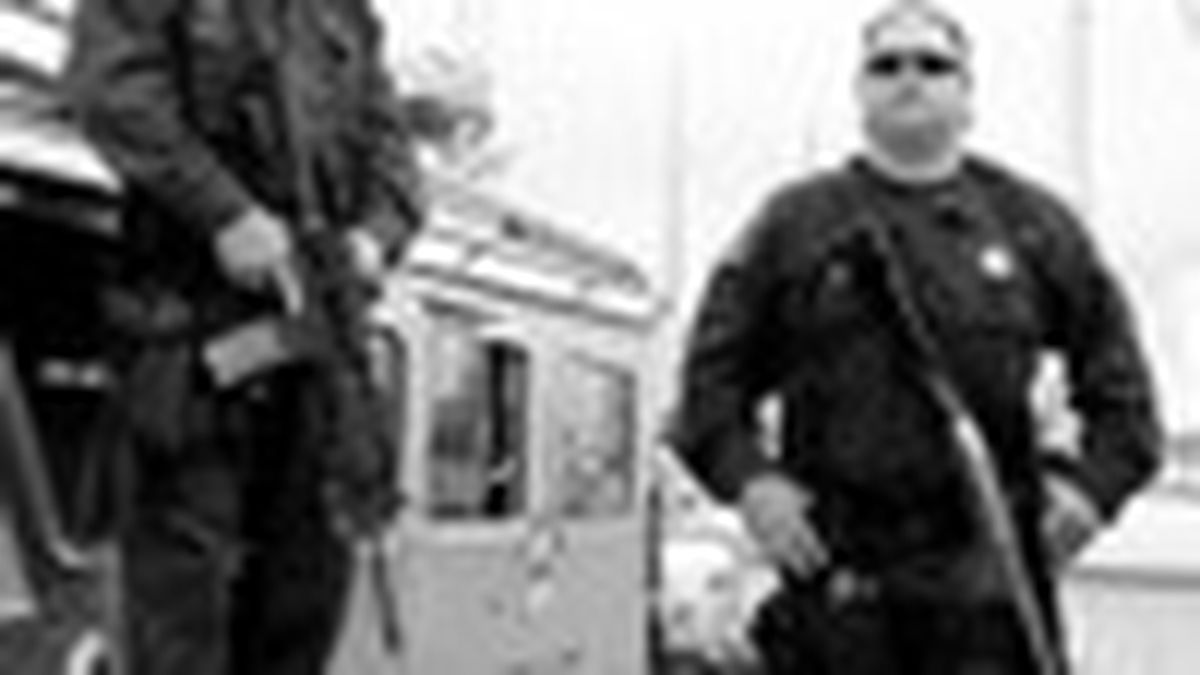
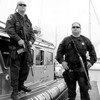
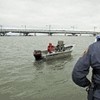
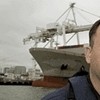
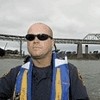
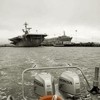









![12 Sites Like EscortBabylon: Best Escort Sites & Adult Personals [2024] sites like escortbabylon](https://eastbayexpress.com/wp-content/uploads/sites/15/2023/11/sites-like-escortbabylon-100x70.jpg)
